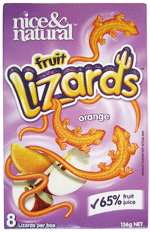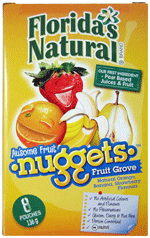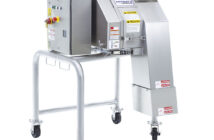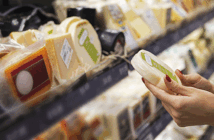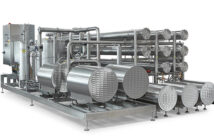Although it has been proven time and again that health is normally not a key driver in confectionery purchasing and consumption, particularly in the impulse market, the rising level of interest in naturalness in the food and drinks market as a whole has nevertheless been making a growing impression in the confectionery sector and driving the move to ‘clean labelling’ by the industry.
Nearly 9.5 percent of all confectionery launches recorded by Innova Market Insights in the 12 months to the end of September 2012 used either natural or additive-/preservative-free claims or both, making it the most popular health claim overall.
Next was sugar-free/ low-sugar/ no-added-sugar, featured on just under nine percent of introductions, organic on 3.3 percent and low-fat on just under two percent.
Levels of interest in natural and additive-/preservative-free claims have been much higher in the more developed markets, particularly the USA and Western Europe, where they accounted for 16 percent and 15 percent of total confectionery introductions, respectively.
Sugar confectionery and chocolate both featured a similar number of launches using natural and additive- or preservative-free claims, but their 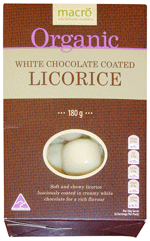
Despite natural and additive-free products being more significant in sugar confectionery, there has been ongoing interest in the chocolate market, as exemplified by the early 2012 announcement by Nestlé UK that it had removed all artificial additives from its confectionery lines, replacing over 80 ingredients with natural alternatives in the 79 products in its UK portfolio. Similar initiatives were also underway in Canada and a number of other European markets. Rivals Mars and Cadbury (Kraft) have also taken steps to cut down on artificial ingredients.
A recent development that could also help in the drive for clean-label confectionery has been the growing use of the natural sweetener stevia, which finally gained EU approval in 2011, following on from 2008 approvals in the USA and Australasia. Relatively few of the stevia-sweetened products launched to date have been in the confectionery market, however, with five percent of the total recorded by Innova Market Insights in the 12 months to the end of September 2012, and this includes Asia, where stevia has been in use for many years. Confectionery launches featuring stevia have risen sharply, however, more than quadrupling over a one year period and the perceived benefits of a natural, tooth-friendly, low-calorie sweetener in improving the nutritional profile and image of both sugar and chocolate confectionery products is likely to continue to appeal to the industry in product development terms.
With the relatively recent approval of stevia for food use in Western Europe, it is perhaps not surprising that interest has been particularly marked there, not just for specialist dietetic-type low-calorie and sugar-free confectionery, but also in more mainstream products. Germany has seen particular levels of activity, with 2012 introductions including a reformulation of Kalfany’s Pulmoll sugar-free throat sweets with vitamin C, using stevia as a sweetener rather than artificial sweeteners such as aspartame and acesulfame-K and the mid-year launch of its Acti Fresh Drops with stevia and natural fruit juice concentrates, as well as IQ Elements Lemon and Orange Mints from Pit Süsswaren Hoffman, featuring gourmet mints made with stevia sweeteners and flavored with green tea. Perhaps most significant, however, was a launch from Germany’s leading gums and jellies company Haribo, which introduced Stevi-Lakritz liquorice sweets, formulated to give a natural product with 40 percent fewer calories than standard lines.
Lu Ann Williams, research manager at Innova Market Insights, confirms that interest in naturalness, all-natural ingredients and the elimination of artificial additives has continued to be an area of considerable interest in the food and drinks market, despite rising concerns over definitions of the term ‘natural’, and confectionery appears to be no exception. Looking at levels of new product activity, she reports, this trend seems set to continue, not only in the introduction of new clean-label lines, but perhaps more significantly in the reformulation of existing market- leading brands to meet clean-label criteria.
www.innovadatabase.com


























































































